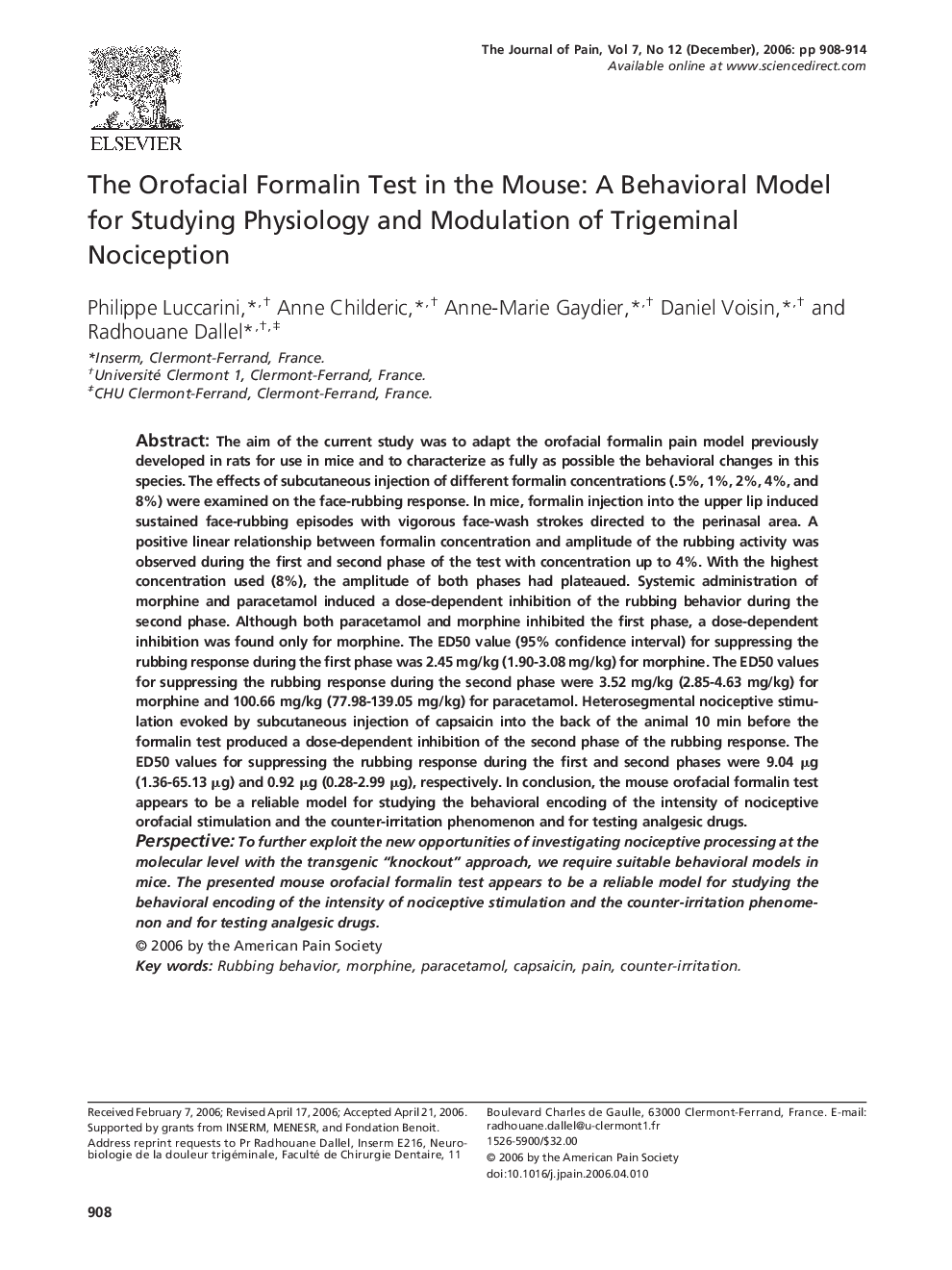| کد مقاله | کد نشریه | سال انتشار | مقاله انگلیسی | نسخه تمام متن |
|---|---|---|---|---|
| 2723878 | 1566847 | 2006 | 7 صفحه PDF | دانلود رایگان |

The aim of the current study was to adapt the orofacial formalin pain model previously developed in rats for use in mice and to characterize as fully as possible the behavioral changes in this species. The effects of subcutaneous injection of different formalin concentrations (.5%, 1%, 2%, 4%, and 8%) were examined on the face-rubbing response. In mice, formalin injection into the upper lip induced sustained face-rubbing episodes with vigorous face-wash strokes directed to the perinasal area. A positive linear relationship between formalin concentration and amplitude of the rubbing activity was observed during the first and second phase of the test with concentration up to 4%. With the highest concentration used (8%), the amplitude of both phases had plateaued. Systemic administration of morphine and paracetamol induced a dose-dependent inhibition of the rubbing behavior during the second phase. Although both paracetamol and morphine inhibited the first phase, a dose-dependent inhibition was found only for morphine. The ED50 value (95% confidence interval) for suppressing the rubbing response during the first phase was 2.45 mg/kg (1.90-3.08 mg/kg) for morphine. The ED50 values for suppressing the rubbing response during the second phase were 3.52 mg/kg (2.85-4.63 mg/kg) for morphine and 100.66 mg/kg (77.98-139.05 mg/kg) for paracetamol. Heterosegmental nociceptive stimulation evoked by subcutaneous injection of capsaicin into the back of the animal 10 min before the formalin test produced a dose-dependent inhibition of the second phase of the rubbing response. The ED50 values for suppressing the rubbing response during the first and second phases were 9.04 μg (1.36-65.13 μg) and 0.92 μg (0.28-2.99 μg), respectively. In conclusion, the mouse orofacial formalin test appears to be a reliable model for studying the behavioral encoding of the intensity of nociceptive orofacial stimulation and the counter-irritation phenomenon and for testing analgesic drugs.PerspectiveTo further exploit the new opportunities of investigating nociceptive processing at the molecular level with the transgenic “knockout” approach, we require suitable behavioral models in mice. The presented mouse orofacial formalin test appears to be a reliable model for studying the behavioral encoding of the intensity of nociceptive stimulation and the counter-irritation phenomenon and for testing analgesic drugs.
Journal: The Journal of Pain - Volume 7, Issue 12, December 2006, Pages 908–914